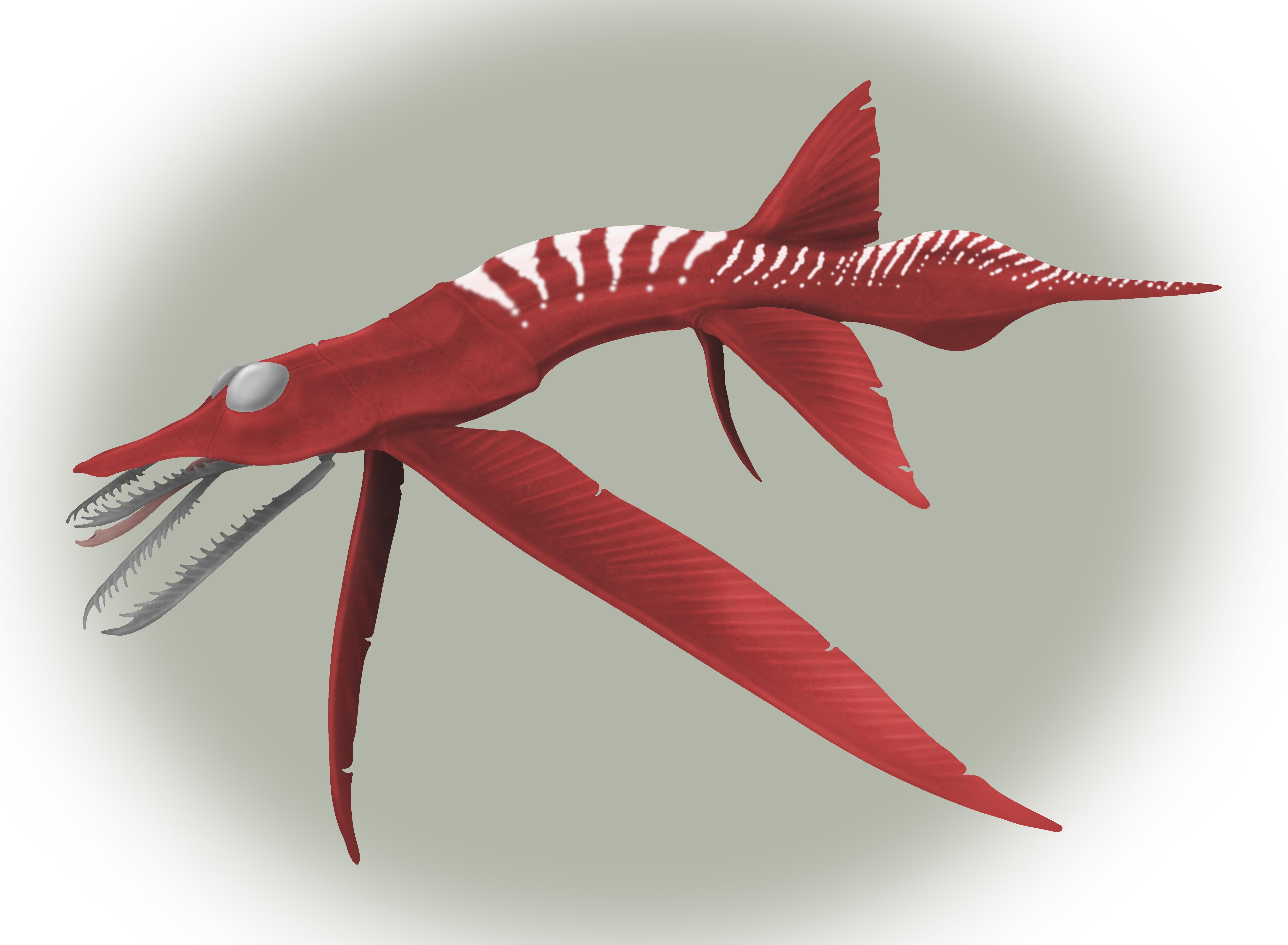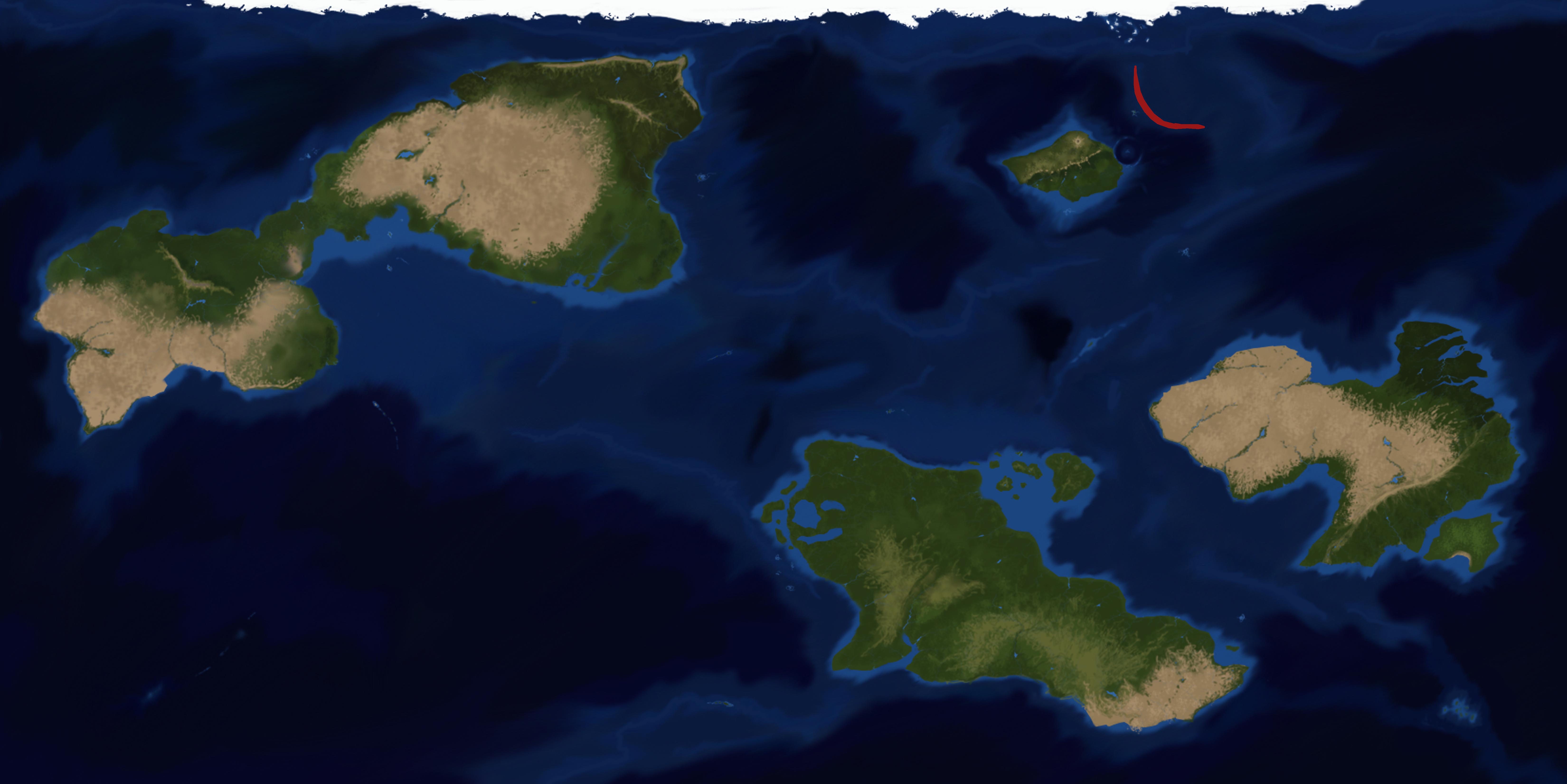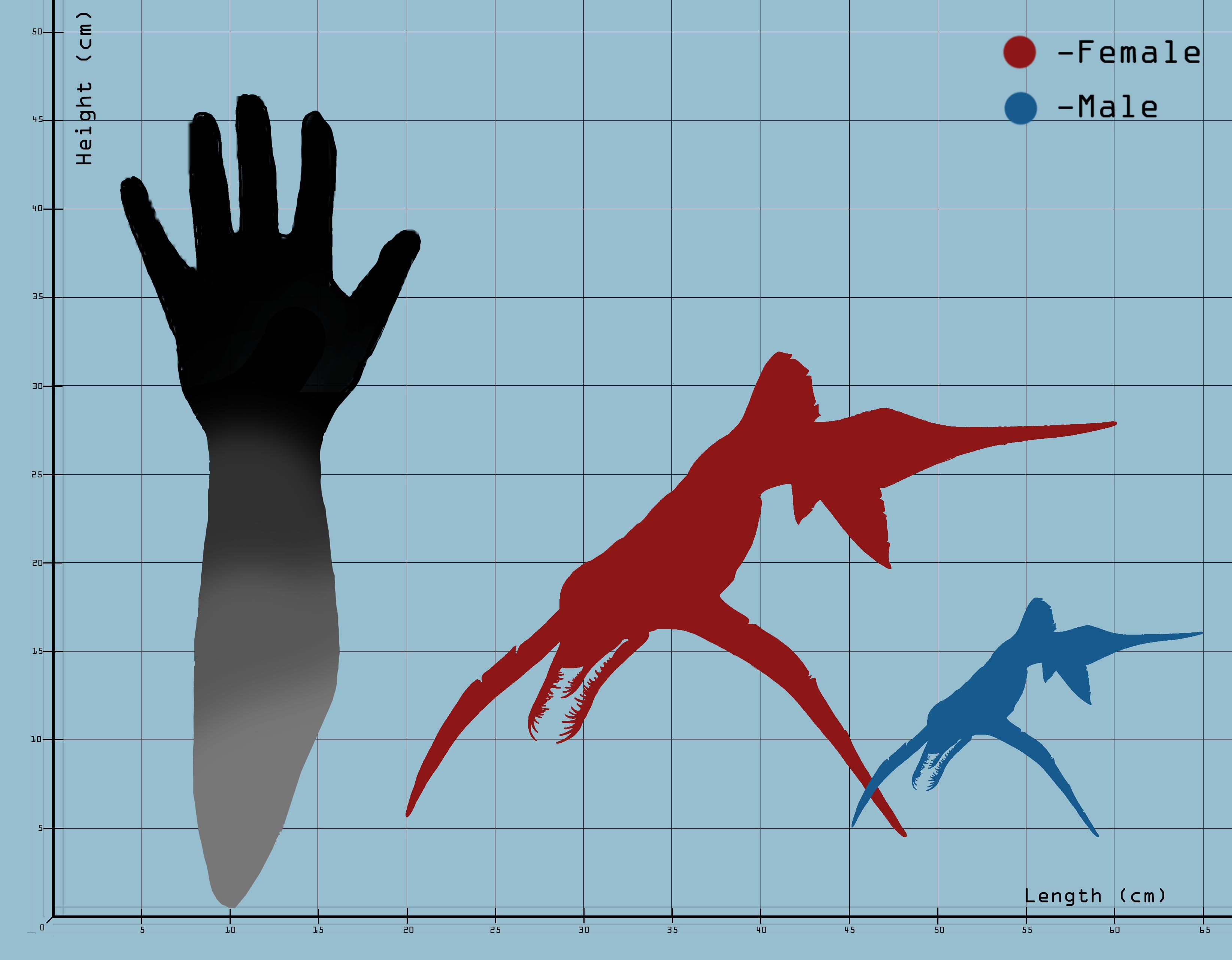Bigeye Pincerfish
Gigantophtalmus novee is an abyssal dweller of the Nova trench situated east of the Gleann Blathànna territories.
Most notably known for the large eyes used by the animal to see even in the dimmest light and the pincer-like jaws, G. novee is a quite adaptable hunter, being able to search the ocean floor with meticulous precision in order to find various preys like Sandcreepers, invertebrates and the occasional carrion.
The long pectoral fins are horizontally positioned as in more advanced relatives such as Kugawas.
The dermis is reinforced to better resist the high pressures and to better endure predators.
The red body is perfect for camouflaging in the dark waters it lives in, while the whitish stripes along dim bioluminescence are used as a reflective surface that results disruptive to most predators’ eyes making it an unsuitable prey for most would-be aggressors.
First described in 2566 by marine biologist M. Comeway.
Basic Information
Anatomy
- Eyes disproportionally large to the head.
- Rostrum cranially stretched and laterally thin.
- Jaw I and II long and Thin.
- Tuberculus almost completely retracted in rest position.
- The dermis of the dorsum is very thick.
- Thorax laterally extended with a sudden gap at the start of the tail.
- Pectoral fins elongated and ventrally moved, like in more the more advanced Kugawinae.
- Anal II missing; Anal I fan like.
- Both the Dorsal fin and Anal I are caudally positioned right near the start of the Gill Fan.
- Gill fan long with low ridges.
- Tail extends way after the end of the Gill fan.
Genetics and Reproduction
Unfortunately not much is known about this animal's reproduction and behaviour in they're natural environment as only a handful of sightings have been recorded in the fourteen years since its discovery in 2566.
What we know is that the females of these amphibians surface from the depths they live in two to three times a year to lay eggs.
The females lay the eggs on the surface of the rocks overlooking the Trench and abandon them there.
The eggs take thirty days to hatch and the spawns live near the Trench's entrance for their first month of life before diving deep beneath the surface.
It's not known when a Gigantophtalmus novee reaches sexual maturity.
Growth Rate & Stages
The spawn measures 3 cm at birth.
The loss of the natal aculeus happens two weeks after hatching.
We don't know much else of the animal's lifecycle.
Ecology and Habitats
The species is Hadalpelagic, living at depths superior to 6,000 m inside the Nova Trench.
The spawns are Abyssopelagic for a brief period of time before submerging into the Trench.
Not much is known about this animal's relationship with the surrounding environment.
Dietary Needs and Habits
The spawns feed on Zooplankton and deep sea invertebrates of small size.
Adults are known to feed on deep sea invertebrates that they attach themselves to with the jaws.
Biological Cycle
Analysis of the body of an egg-laying female compared to a young juvenile a month old evidenced some ontogenic changes.
The young specimens have wildly swollen thoraxes compared to their adult counterparts.
The pectoral fins of the youngs are way longer and finish in thin strips of membrane going down for the majority of the body.
Additional Information
Social Structure
Information gathered so far suggests this animal lives a solitary life in the depths of the Nova Trench.
Only known occasion where large numbers of the species converge together is during the egg deposition migration to the surface.
Adults are known to possess a dim bioluminescence on the dorsal area of the body, this very dim light highlights the red and white striped body; this colour combination alongside the bioluminescence results disruptive to the eyes of various predatory amphibians that would otherwise be able to hunt them.
Uses, Products & Exploitation
There are no uses for this animal.
Geographic Origin and Distribution
Perception and Sensory Capabilities
Sight is essential for this animal; the animal is able to see the smallest movement on the ocean floor by bioluminecent animals.
This animal also relies on Electrical signals it sends through the water to captate movement in the immediate vicinity.
Symbiotic and Parasitic organisms
No known mutualism known.
A specimen was found with skin worms attached.
Scientific Name
Enetodontia; Enetodontida; Paleostomatosoidea; Tubercolostomatosoidea; Tubercolostomatosidae ; Gigantophtalmus; G. novee
Lifespan
9 years (based on closest relatives)
Conservation Status
DATA DEFICIENT: No measures on the protection of this species are under effect at this time
Population trend: UNKNOWN
Average Weight
1 to 3 kg
Body Tint, Colouring and Marking
The body is bright red with pink-white stripes coming down from the back to the midsection of the body.
Adults possess bioluminecence on the dorsal area of the body.
Remove these ads. Join the Worldbuilders Guild












Comments